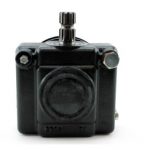LawnEQ is a trusted source for genuine OEM Parts- Shop for the part you need from your favorite manufacturers such as Landpride, Toro, Kubota, and more today on our OEM Parts Lookup Tool!
We spend a lot of time worrying about fertilization during the growing season. We spend time, money, and effort putting down nutrients to help our plants and grass grow. But what if there was the possibility of needing to fertilize less, meaning you can divert that time, money, and effort elsewhere? The idea of nitrogen-fixing plants just might be able to do that that for you.
What Does Nitrogen-Fixing Mean?
“Nitrogen-fixing” means that the plants that are being referred to are able to form a symbiotic relationship with the common rhizobium bacteria. Working with this bacteria, the plant is able to absorb atmospheric nitrogen and convert it into the kind of nitrogen that can be used by plants for nutrition. The bacteria converts the nitrogen and stores it in the roots, in a nitrogen nodule, keeping it there for the plant to use.
During its growth, the plants release very little of the usable nitrogen into the soil. It is only after they die and decompose that it is released into the surrounding soil for other plants to use. Once a plant dies, it can be turned into the soil for nutrients.

Red Clover
What are Some Types of Nitrogen-Fixing Plants
The most common types of nitrogen-fixing plants are legumes, although not all legumes have the ability. The best crops and plants for this include clover, alfalfa, lupines, soybeans, mimosa, licorice, myrica, cowpeas, and other beans and peas. There are also a number of nitrogen-fixing shrubs and trees, but due to how the process works, these aren’t logical for introducing nitrogen into the soil for other plants to use. Be careful not to introduce anything that is consider a non-native or invasive species for your ecosystem.
How Can Nitrogen-Fixing Plants Benefit Your Garden?
By using nitrogen-fixing plants in the proper rotation with the rest of your crops or plants, you can reduce the amount of fertilizer you may need, and the amount of chemicals you may need to use on your lawn and garden over time. In fact, the idea of using a nitrogen-fixing crop is at the heart of crop rotation, which farmers have used for years to reduce the amount of fertilizer and other chemicals needed over the course of a crop. Nitrogen-fixing plants
What is the Best Way to Introduce Nitrogen-Fixing Plants into Your Lawn and Garden?
Since nitrogen-fixing plants have to die to transfer the nitrogen into the soil, your best bet is to plant a winter cover crop of hardy, fast-growing plants. Clover is a particularly good option. Then, in the spring prior to planting your garden, till the crop under. This will kill the crop, and as it decomposes, the nitrogen will be released into the soil. This is almost like a delayed-action fertilizer – the chemical won’t start becoming part of the soil until after it has been tilled, so it won’t be released until you have already planted your next crop.
So consider adding a nitrogen-fixing plant into your lawn, garden, and crop rotations. There’s a reason why so many folks who depend on the land for their living have gone this route already – it works well, and is a time-saver.






